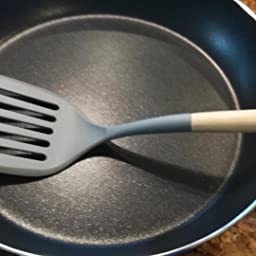Nonstick cookware has become a popular choice in kitchens worldwide due to its convenience and ease of use. With its smooth, nonstick surface, it promises hassle-free cooking and effortless cleaning. However, like any other cooking utensil, nonstick cookware has its fair share of disadvantages that should be taken into consideration. In this blog post, we will explore some of the drawbacks associated with nonstick cookware.
Limited Durability: Nonstick coatings are susceptible to wear and tear over time. The nonstick surface can easily scratch or peel, especially if metal utensils or abrasive cleaning tools are used. Once the coating is damaged, the pan becomes less effective, and the food may start to stick, defeating the purpose of using nonstick cookware. To prolong the lifespan of nonstick pans, it is crucial to handle them with care, avoiding sharp utensils and abrasive cleaning methods.
Health Concerns: One of the primary concerns associated with nonstick cookware is the potential release of harmful chemicals when exposed to high heat. Traditional nonstick coatings are made using polytetrafluoroethylene (PTFE), which can release toxic fumes when overheated. These fumes can be harmful to humans and pets, leading to symptoms commonly known as “polymer fume fever.” Although manufacturers have introduced newer generations of nonstick coatings claiming to be PTFE-free, some concerns remain regarding the safety of these alternatives.
Temperature Limitations: Nonstick cookware is not suitable for cooking at very high temperatures. The nonstick coating can start to degrade and emit fumes when exposed to temperatures above its recommended limit. This can restrict the versatility of nonstick pans, as certain cooking methods that require high heat, such as searing or broiling, may not be feasible. It is important to adhere to the manufacturer’s instructions regarding heat limitations to avoid damaging the nonstick surface.
Need for Special Care: Nonstick cookware requires special care to maintain its nonstick properties. Many nonstick pans cannot be washed in the dishwasher and require gentle hand washing. Harsh detergents, abrasive sponges, and scouring pads should be avoided, as they can damage the coating. Additionally, the use of cooking sprays and oils can cause buildup on the nonstick surface, leading to a loss of effectiveness over time. Regular maintenance and following the manufacturer’s care instructions are crucial to ensure the longevity of nonstick cookware.
Limited Browning and Caramelization: Achieving a deep sear or caramelization on food can be challenging with nonstick cookware. The smooth nonstick surface prevents food from developing a rich, browned crust, as it inhibits the Maillard reaction. This reaction is responsible for the delicious flavors and textures that are achieved through browning. While nonstick cookware is excellent for delicate foods that require gentle cooking, it may not be the best choice for recipes that rely on browning or caramelization for flavor development.
Understanding the disadvantages of nonstick cookware allows us to make informed decisions when choosing our kitchen utensils. While nonstick pans offer convenience and easy cleanup, it is essential to consider factors such as durability, potential health concerns, temperature limitations, special care requirements, and limitations in browning and caramelization. Exploring alternative cookware options, such as stainless steel, cast iron, or ceramic, can provide a wider range of cooking techniques and address some of the drawbacks associated with nonstick pans. Ultimately, striking a balance between convenience and health-conscious cooking is key in creating a well-equipped and safe kitchen environment.




